As the son of a long time elementary school teacher, I was always reminded of the importance of the second day of March — Dr. Seuss’s birthday. We’ve all had at least some exposure to the author through his famous books and their movie adaptations, but many of us (who aren’t offspring of teachers) fail to remember this day as Dr. Seuss’s birthday when it comes around each year.
First, a little background: Dr. Seuss’s real name was Theodore Seuss Geisel, and he was born on March 2, 1904 in Massachusetts. He later attended Dartmouth College, where he was involved in editing a humor magazine called Jack-O-Lantern.
Here’s a fun fact that you’ve never learned from your old teachers: after being caught at school drinking with friends at a party he threw, Geisel was consequently banned from being a part of the magazine. However, he still continued to publish under a few variations of “Seuss,” eventually leading to his famous pseudonym “Dr. Seuss.”
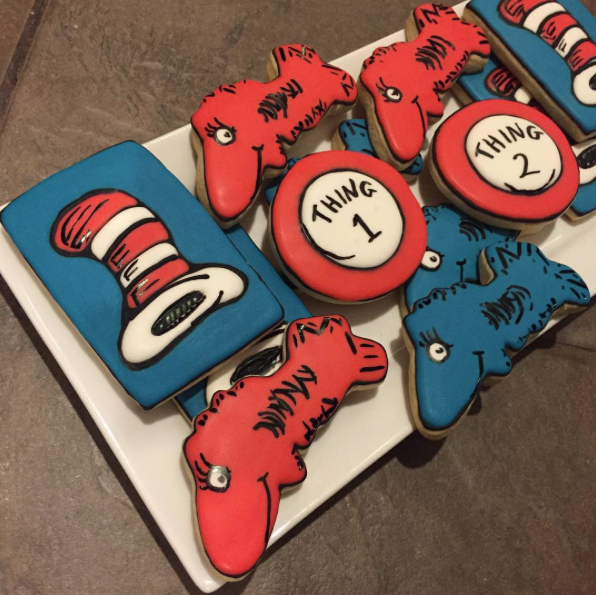
Photo courtesy of jasons_wifee on Instagram
After he became uninterested with continuing his education at Oxford University in England, Dr. Seuss called it quits on his academic career and returned to the United States to begin his life as a cartoonist.
Eventually, he had found his true calling in children’s literature, and published the many books we all hold dear to our hearts, such as The Cat In The Hat, Horton Hears A Who, The Lorax, How The Grinch Stole Christmas, Green Eggs And Ham, Oh, The Places You’ll Go! — the list goes on. His stories are famous for their fun rhymes, a characteristic that he contributes to his mother when she told him nursery rhymes before bed.
So how do we celebrate this man’s birthday? Well, one way is join the nation in the Seuss-inspired National Read Across America Day, which is a holiday dedicated to bringing together books and children of all ages.
Another way to celebrate is the old fashioned way — with food. So here’s a short list of foods mentioned in Dr. Seuss books that you can (attempt to) create and enjoy on Dr. Seuss Day.
Green Eggs And Ham
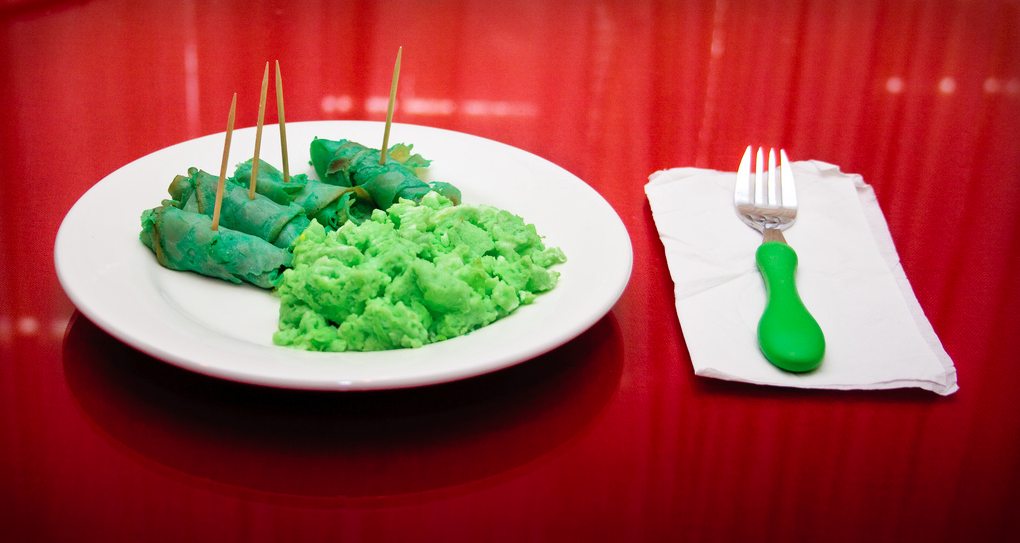
Photo courtesy of Ian Aberle on flickr.com
Every year on March 2nd, I would find a steaming plate of green eggs and ham waiting for me along with an ecstatic mother on one of her favorite holidays. This classic Dr. Seuss meal comes from the book with the same name. You don’t need Sam-I-Am to try this colorful combination yourself — some green food coloring will do the trick.
Who-roast-beast and Who-hash
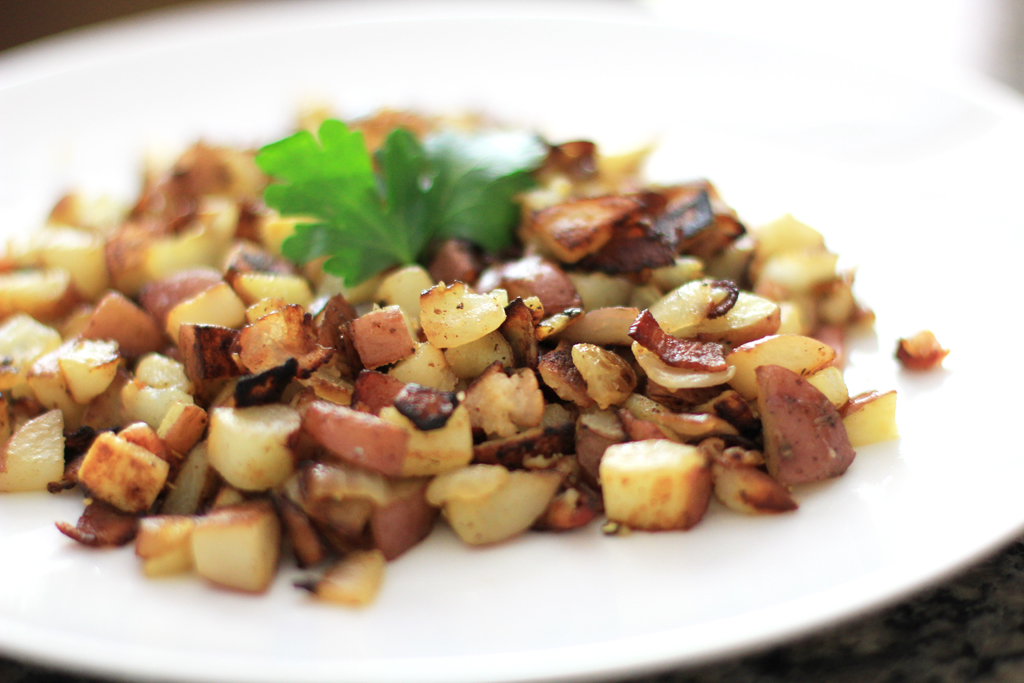
Photo by Devon Carlson
The only better day to enjoy a plate of Who-roast-beast and canned Who-hash would be on Christmas — the day that the Grinch’s heart grew three sizes. While Roast Beast may be unavailable for the Grinch to carve, and Who-hash isn’t found in any grocery stores, a substitution of roast beef and this Who-hash recipe (followed by a delicious Who-pudding) a will make you feel like a true Who in Who-ville. Feast! Feast! Feast!
Truffula Fruit
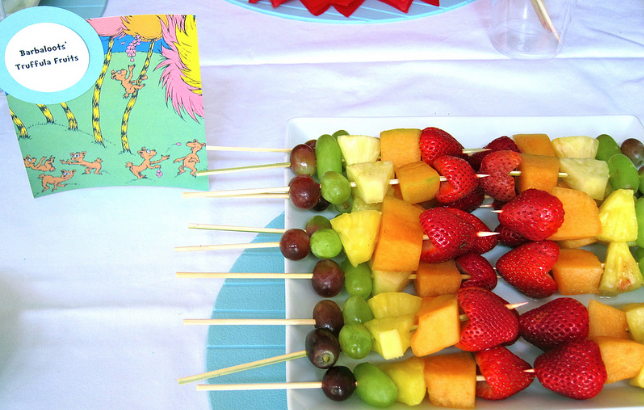
Photo courtesy of carrie on Flickr.com
We can never know what the Truffula fruit truly tastes like, but we can trust the opinions of the local Brown Bar-ba-loots, who feed off of the Truffula trees daily.
In The Lorax, the Dr. Seuss sends a message to all on the importance of the conservation of nature, the harmful effects of pollution, and the impact of one person taking action when it is needed.
Though the Truffula tree is not grown naturally here on Earth, we can recreate it with this adorable recipe and attempt to capture its fruit with some creative adaptations of our own favorite fruits.
Beezle-Nut Juice and Stew
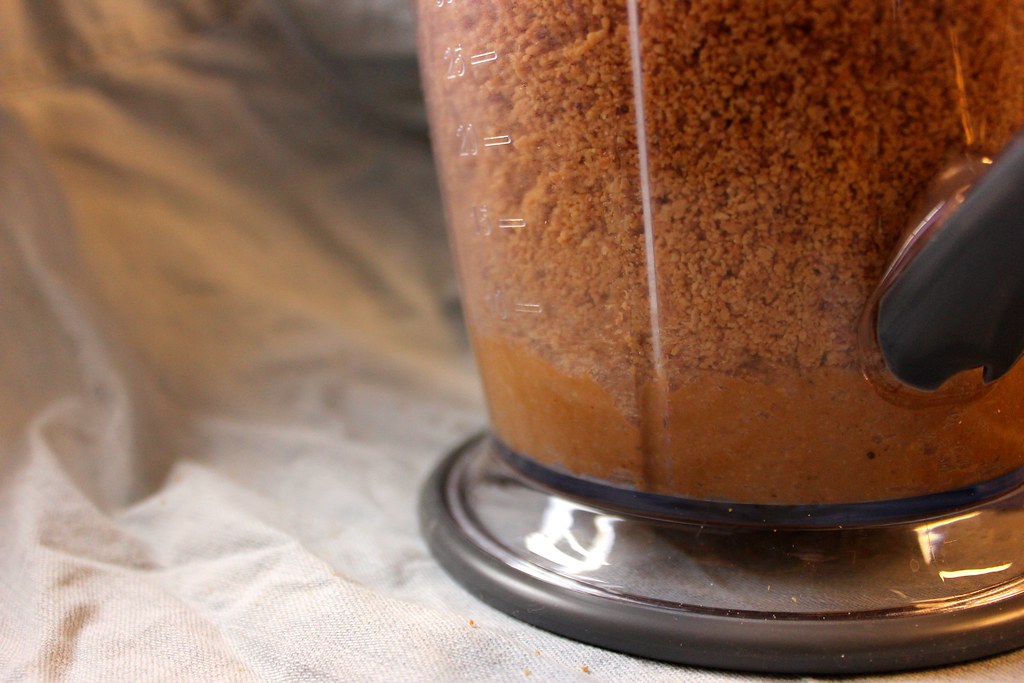
Photo by Katherine Carroll
In Horton Hears A Who!, Beezle-Nuts seem to be used in a variety of different ways (and in this story, all are used to threaten Horton and the Whos): boiling hot Beezle-Nut oil, Beetle-Nut stew, and Beezle-Nut juice.
Like Truffula trees, Beezle-Nuts are impossible to find, but a nutty shake and peanut stew are acceptable replacements for celebrating Dr. Seuss’s birthday.
Moose Juice and Goose Juice

Photo courtesy of Chrissy F on Flickr.com
Two of the biggest mysteries of the world remain unsolved: what is in Moose Juice and what is in Goose Juice in the story of Dr. Seuss’s Sleep Book?
Adding to that, why is Moose Juice gross to a goose while Goose Juice tastes bad to a moose? Is there a reason that a goose can’t enjoy the moose’s juice? Does a Goose like different juice than a moose? I tried to think it through logically, but there’s just no use.
At Seuss Landing in Universal Studios Orlando, they take a crack at this mystery, serving tangerine juice (Moose Juice) and sour green apple juice (Goose Juice). All flavors aside, any green and orange juices are appropriate to drink on this day to mimic the two mysterious Moose and Goose liquids if you use your imagination.
Grab a book and enjoy these Seussical foods while we read across America and celebrate the man who still brings happiness to millions to this day in the form of absurd characters, radical situations, relevant and everlasting lessons, and, of course, memorable rhymes.


